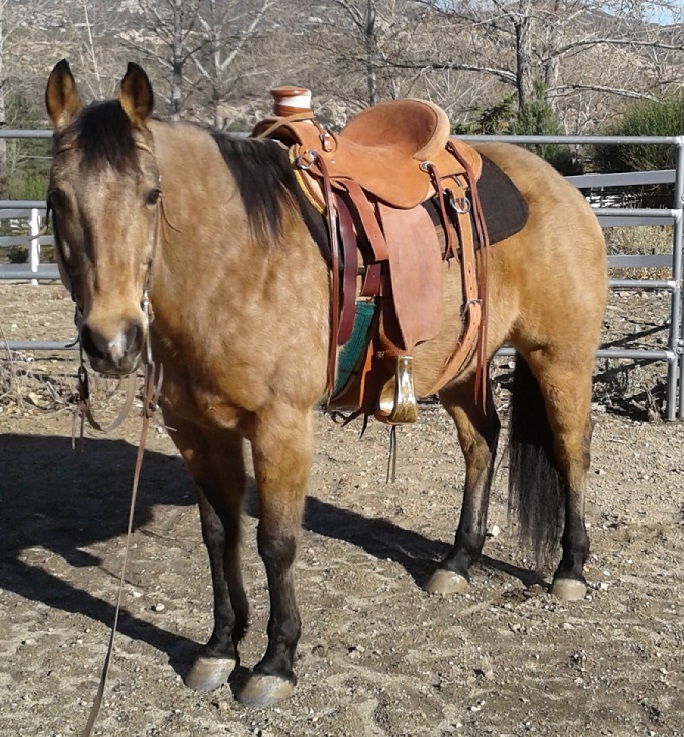-
Posts
401 -
Joined
-
Last visited
Profile Information
-
Gender
Male
-
Location
Southern California
LW Info
-
Leatherwork Specialty
saddles and tack
-
Interested in learning about
improving leather working skills
-
How did you find leatherworker.net?
search on web
Recent Profile Visitors
11,737 profile views
Goldshot Ron's Achievements

Member (2/4)
-
Here's how I would do your project: 5/8" is the standard width, but for stamping you may go 3/4 to and 1" wide. Cut your pieces, case the leather, and do your stamping. Edge and burnish the edges and dye (I'd use dark brown, Fiebings pro dye if possible). Treat with neetsfoot oil (both sides) and let dry. After oil has penetrated, rub it well with a cotton cloth or sheepskin (this enhances your work). Now, punch your holes and assemble. If you oil after punching the holes, the oil will darking the leather around the holes (no real problem, it will level out over time). There is no real value to use a protective coating such as resolene or tancote. Just wipe off the dirt and swet after riding.
-
I haven't read any comments about her tool use. (Or, maybe I missed it.) When replacing billets, I punch my holes in the leather first, before attaching them to the webbing, and gluing them doesn't help much in my opinion. But, what bothered me the most was her use of tools. Using a cobblers hammer on stitching irons, or hole punches, to set the holes irks the hell out of me. I know it's "anal" of me, but I even polish the face of my cobbler hammers so not to leave marks on my leather. I agree with Mulesaw, trying to glue a patch on to this saddle probably won't hold. Ron
-

Noseband With a Bad Reputation?
Goldshot Ron replied to TomE's topic in Saddle and Tack Accessory Items
I had to look twice to see if you actually installed a crank or pulley on the nose band. Like usual Tom, your work is flawless. Keep posting for us "want to be's". Thumbs up. Ron -

Halter/Bridle combination
Goldshot Ron replied to BlackDragon's topic in Saddle and Tack Accessory Items
I have made a few of this type of bridle, and your's looks very good. One comment, I think your throatlatch is on upside down. Very nice work. -
Photos please...I am not familiar with this saddle that you mentioned, but may help with photos.
-

Adler 205-370 - help an old man who screwed up
Goldshot Ron replied to councilman24's topic in Leather Sewing Machines
Sorry, I must have imagined it. I could not find the timing video either. But, Uwe Grosse has some on Youtube that are informative, and there is a Weaver video that offers good information on a 205. One problem I had when I first got my 205 was that I had to order two extra shims to fit behind the collar on the bobbin to accommodate 346 size thread. There was certainly a learning curve between the Adler and a clone 205. Good luck. -

Adler 205-370 - help an old man who screwed up
Goldshot Ron replied to councilman24's topic in Leather Sewing Machines
Weaver has a good video on Youtube for timing your 205. -
Randy, what I do to avoid this problem is to use an overstitch wheel and mark about 4 or 5 stitch marks. Start at the third or fourth mark in reverse to the number one mark, then go forward from there. Make sure you hold both threads when starting. Ron
-

Screws ripped out of saddle tree
Goldshot Ron replied to Mendosa's topic in Saddle Identification, Restoration & Repair
I am going to be a "devil's advocate" here. What make of saddle to you have? Is the tree a rawhide covered wood tree, or fibreglass covered? Is it a composite plastic tree? Is this saddle a: no horn, heavy swell, bronc saddle; or, an old saddle that you thought would work. As Chuck mentioned above, is it worth fixin'. And, Bruce said contact the your saddle maker; lift is too short to skimp on proper repairs. -

Landis 3 Needle and Awl machine not stitching correctly
Goldshot Ron replied to knotzo's topic in Leather Sewing Machines
I just saw this thread. The one thing that I think I see, is that the bobbin is threaded incorrectly in the shuttle. Sewing with the cover off will also affect how it sews. I have messed with my Landis 3 for almost 7 years, and I still do not have faith in it nor myself to tackle a real project. -
I agree with Bland. Your latest photo tells me that the rigging is placed around the 3/4 position, and the rear strap on the rigging dee is attached around the back of the cantle. When going down a steep embarkment, your weight leaning back should be sufficient to keep the saddle in place. The saddle looks well made and well designed. To make the modification that you are asking about, would easily be $350 and more to reproduce something that would blend with the existing design.
- 5 replies
-
- wade saddle
- single rigged saddle
-
(and 3 more)
Tagged with:
-
When I am in a pinch for a square hole, I use a sharp wood chisel.
-
If you can get it, I would suggest using Fiebings acrylic antique dye for your first attempt. It is more foregiving than their Pro dye, and you can lighten it easily with a damp sponge by removing some of the color before it dries.
-
Hey Tom, thanks for the write-up. You did a very good job on your "Constructing Halters" paper. I'll have to put a copy in my notebook on halters and bridles. Ron



